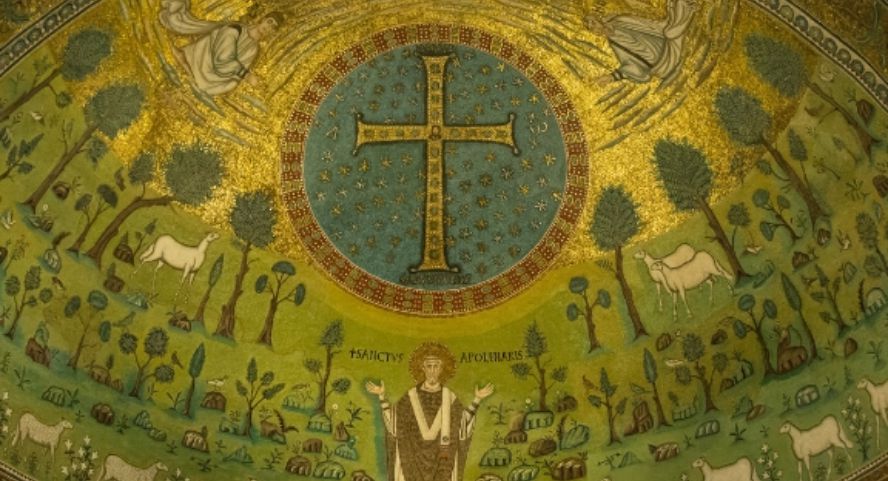Brainless creatures are a call to perfection. Contribution to a study on St. Ambrose’s "Hexaemeron"
Brunon Zgraja
Uniwersytet Opolski , PolandAbstract
The present article presents an interpretation made by St. Ambrose in the Commentary to the Six Days of Creation, the so-called Hexaemeron, of some features of the brainless crestures – plants and animals – in the context of indications and instructions regarding perfection of moral life of the faithful entrusted to his care and, at the same time, it shows the essential elements of a model of Christian perfection, from the point of view of Ambrose as pastor. In brief, Ambrose appeals to the faithful to cultivate in themselves an attitude of humility before God, to stand up for the Christ’s persecuted sheepfold, to guard the deposit of faith handed over to them, to faithfully fulfill his commands, furthermore, to care for conversion of others, to strive for a proper shape of matrimonial and parental love. What is more, Christian perfection, in Ambrose’s opinion, means also freedom from greed, from laziness, a development of the virtues of faith and hope, cultivating an attitude of justice and charity in one’s life, ability to withstand poverty, trust in God’s care, zeal in fulfilling the tasks entrusted to us, hospitality, care for parents, joint responsibility for the development of the State, and also keeping widow’s chastity.
Keywords:
Ambrose, HexaemeronReferences
Ambrosius, Hexaemeron
Bogacki A., Wstęp, w: Św. Ambroży, Hexaemeron, tłum. W. Szołdrski, PSP 4, Warszawa 1969
Bogucki A., Wstęp, w: Św. Ambroży, Wykład ewangelii według św. Łukasza, tłum. W. Szołdrski, PSP 16, Warszawa 1977
Brożek M., Heksaemeron w literaturze antycznej, „Meander” 38 (1983)
Campenhausen H. von, Ojcowie Kościoła, tłum. K. Wierszyłowski, Warszawa 1998
Crouzel H., La distinction de „la typologie” et de „l’allégorie”, BLE 65 (1964) 161-174
Drączkowski F., Patrologia, Pelplin-Lublin 1998
Gosserez L., Les jardins de saint Ambroise dans l’„Exameron”, „Graphè” (2008) nr 17, 65-93
Krynicka T., „Hexaemeron” Ambrożego z Mediolanu jako źródło do XVII księgi „Etymo¬logii” Izydora z Sewilli, VoxP 25 (2005) t. 48
Lurker M., Słownik obrazów i symboli biblijnych, tłum. K. Romaniuk, Poznań 1989
Małunowiczówna L., Ambroży, EK I 413
Nazzaro A.V., Il „De viduis” di Ambrogio, „Vichiana” 13 (1984)
Paciorek A., Ambrozjańskie inspiracje egzegezy biblijnej, VoxP 17 (1998) t. 34-35, 95-105
Pałucki J., Ambroży z Mediolanu, Kraków 2004
Pałucki J., Na¬bywanie cnót w ambrozjańskim programie doskonalenia chrześcijańskiego, w: Droga doskonalenia chrześcijańskiego w epoce patrystycznej. Zagadnienia wybrane, red. F. Drączkowski – J. Pałucki – M. Szram, Lublin 1997, 77-88
Pałucki J., Świę¬ty Ambroży jako duszpasterz w świetle ekshortacji pastoralnych, Lublin 1996
Patrolo¬gia, III, ed. J. Quasten – A. di Berardino, Casale Montferrato 1992
Pizzaloto L.F., La dottrina esegetica di sant’Ambrogio, Milano 1978
Savon H., Le temps de l′exégèse allégorique dans la catéchèse d′Ambroise de Milan, w: Le temps chrétien de la fin de l’Antiquité au Moyen Age III-XIIIe siècle (Paris, 9-12 mars 1981), éd. J.M. Leroux, Paris 1984, 345-361
Swift L.J., Basil and Ambrose on the Six Days of Creation, „Augustinianum” 21 (1981) 317-328
Żurek A., Wprowadzenie do Ojców Kościoła, Kraków 1993
Uniwersytet Opolski
License
Papers published in Vox Patrum are covered by the Attribution-NoDerivatives 4.0 International (CC BY-ND 4.0) licence. Authors and users can use published works licensed under the CC-BY-ND since 2018. For earlier publications, copyrights are available under fair use rights in accordance with the Act of February 4, 1994 on copyrights and related rights.







